Lapping Up Luxury
Luxury = Profit
Pam Danziger sees a rising trend in the luxury market—consumers are spending more on luxury experiences—travel, dining, spas, resorts, entertainment, home services and other experiences, and less on traditional luxury goods. 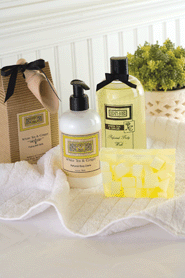 “While high-net-worth consumers live very comfortable and materially enriched lives, their luxury spending is directed less toward ostentation and materialism, and more toward a search for meaning and emotional fulfillment,” says Danziger, the founder of Unity Marketing, an industry research firm in Stevens, PA.
“While high-net-worth consumers live very comfortable and materially enriched lives, their luxury spending is directed less toward ostentation and materialism, and more toward a search for meaning and emotional fulfillment,” says Danziger, the founder of Unity Marketing, an industry research firm in Stevens, PA.
What’s interesting in this trend is that luxury consumption, according to Danziger, is not limited to the super-affluent (those who make $150,000 and above). It also includes middle-class Americans who are indulging in special treats to enhance the quality of their lives, in increasing numbers. Of even more significance to gift shop retailers is the growing list of products that can re-create the luxury experience. In this feature, GIFT SHOP takes a look at two categories of such products: spa goods and aromatherapy.
Spa serenity yields profits
The numbers speak for themselves. According to a study released by the International Spa Association, in Lexington, KY, there were 13,757 spas in the United States in August 2006, up from 10,128 in April 2004. This represents an annual growth rate of 16 percent. In February this year, the association reported that nearly 14,000 spas in the United States were generating around $9.7 billion in revenue.
By all indications, the growth in the spa industry and in associated spa products is expected to remain strong. “The spa trend has been around for a while and I think it is only getting stronger as our lives get busier,” says Amy Ryan, of Santa Barbara, CA-based Kits ‘n Kaboodle Inc. The company manufactures spa eye pillows, heatable slippers and a whole host of related spa and pet products.
“People are looking for alternative ways to soothe stress and relax,” she says.
Spa at home
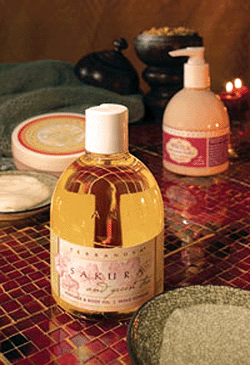 While going to a spa is a special indulgence, bringing the spa home is becoming a popular trend. The ISPA reports that spa products—such as massage oils, clothing, and related soaps and lotions—have gained mainstream popularity.
While going to a spa is a special indulgence, bringing the spa home is becoming a popular trend. The ISPA reports that spa products—such as massage oils, clothing, and related soaps and lotions—have gained mainstream popularity.
There are two reasons: money and convenience. “[Consumers] don’t have to go to a spa and spend $300, $400 on a therapy,” says Lanie Cameron, sales manager for the Agoura Hills, CA-based Barefoot Dreams, which sells blankets; newborn, toddler and kids’ wear; and select products for grown-ups including spa-style robes, throws and blankets. The products allow consumers to have luxurious experiences at times convenient to them. Consider Barefoot Dreams’ robes, which Cameron says help prolong an at-home spa experience. “After a nice massage or a nice scrub [at home], you want to continue that feeling,” she says. “Once you put your arm in, it’s complete, utter relaxation.”
Chuck Irvine, vice president of sales for Esscentual Brands, a supplier of fragrance-oriented home and bath products based in Scottsdale, AZ, agrees that a big draw for at-home spa products is their accessibility to consumers of all income levels. “The vast price range for the cost of these products allows any consumer, no matter what their budget, to feel like they are indulging and pampering themselves,” Irvine says. “I believe we’ll continue to see momentum in this trend as consumers of all ages, genders and ethnicities are spending more time and money on products that provide a wellness benefit, which allows them to relax and rejuvenate with a simple, small indulgence.”
Diversity of products
Exactly what kinds of spa products are on the rise? They run the gamut from robes and slippers to body care. Companies such as Oka b. wholesale “spa thongs,” and other flip-flops in the category. Spa lotions and other body products are also offered by a great number of vendors including Candlevida, Vitabath, Ogallala Body and others. And the products are not only for women. Spa goods for men, such as those made by 1600 for Men and Ahava, are also on the rise.
Dollars in scents
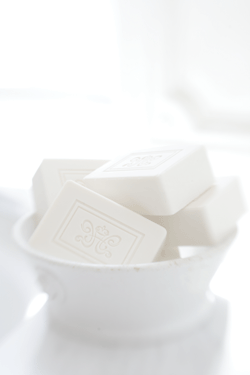 Just as spa products recreate a particular kind of luxury experience, so do products based on aromatherapy. Aromatherapy is the practice of using only pure and natural essential oils and other natural substances to create a whole host of “luxury” products—from body care lotions to massage oils and candles. Danziger says that aromatherapy products are on the rise because they seamlessly integrate the luxury experience. “It isn’t just a decorative item that doesn’t do anything for the customer but look good. It provides a real meaningful experience and [in a small way] enhances the quality of the customer’s life,” she says.
Just as spa products recreate a particular kind of luxury experience, so do products based on aromatherapy. Aromatherapy is the practice of using only pure and natural essential oils and other natural substances to create a whole host of “luxury” products—from body care lotions to massage oils and candles. Danziger says that aromatherapy products are on the rise because they seamlessly integrate the luxury experience. “It isn’t just a decorative item that doesn’t do anything for the customer but look good. It provides a real meaningful experience and [in a small way] enhances the quality of the customer’s life,” she says.
While specific statistics for aromatherapy-based products alone are not widely available, Packaged Facts, a division of Marketresearch.com reported that natural personal care products generated $5 billion in retail sales in the United States in 2004, a 13.1 percent increase from the previous year. That represented the third straight year of double-percentage-point gains. By 2010, Packaged Facts estimates, the market will climb to $7.9 billion. Home fragrance products, meanwhile, were a $2.9 billion market in 2003, an increase of almost 3 percent over 2001 sales of $2.77 billion, according to Packaged Facts. Those in the industry forecast increasing aromatherapy sales, with consumers willing to fork over the cash for these products that deliver a luxury experience.
The natural way
When it comes to aromatherapy, the attraction lies not just in the luxury aspect of the product but also in the feeling of wellness these products recreate—they make people feel good. Like many in the aromatherapy business, Essence of Vali founder Valerie Bennis decided that she wanted a lifestyle incorporating more natural products with an emphasis on wellness. She decided to delve into aromatherapy a little more than a decade ago, and started creating essential oil formulas for friends. She owns a flourishing business that creates aromatherapy blends using what she calls “plant essences.”
Others too are finding that aromatherapy is sweet-smelling business. Companies like Spa Blends, Aromafloria, Mangiacotti Florals and Camille Beckman all use aromatherapy as a vital component of their business operations.
Read the fine print
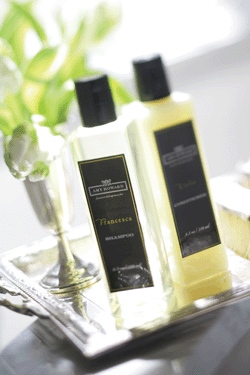 Given the popularity of aromatherapy products, the term is increasingly being used to imply “all-natural” or “wellness” and might not have much to do with essential oils, experts warn. “There are a lot of
Given the popularity of aromatherapy products, the term is increasingly being used to imply “all-natural” or “wellness” and might not have much to do with essential oils, experts warn. “There are a lot of
products that are being marketed ‘all-natural’ when they’re anything but,” says Jeanne Rose, an aromatherapy expert and author of 20 books, including The Aromatherapy Book. “‘Natural’ has been used as an advertising gimmick, is the way I see it. A good customer should learn to read the back of the product.”
“Products falling under the aromatherapy umbrella are in fact often quite different from one another,” says Shawna Knudsen who is in charge of new product development at Ogallala Body in Ogallala, NE. Ogallala Body, a division of Ogallala Comfort Company, creates and sells body lotion, bar soap, salt scrub, body butter and votive candles, all made from milkweed oil.
“Lots of people only use fragrances, which are synthetically manufactured, in their products, and it doesn’t change your body’s chemical balance in the same way. Aromatherapy has a lot to do with body chemistry. It is a buzzword now, and there’s not a great understanding of what it is. It’s not just about fragrance; it goes beyond that to how plant extracts affect body chemistry. There’s a lot of psychology and physiology behind it,” she says.
Show me the science
Barbara Meconis, a registered nurse and owner of Holistic Care Approach, an integrative wellness center in Grand Rapids, MI, emphasizes the importance of using essential oils—not perfumes—to experience the health benefits of aromatherapy. “These aromas have health benefits,” she says. “Those smells aren’t just to smell good—we believe they’re the gateway to healing.”
While many in the industry are squarely on Meconis’ side, there are also a fair number of naysayers, like Dr. Stephen Barrett, M.D., who insist that many of aromatherapy’s health claims are not rooted in science. “Some people think of aromatherapy as a medical system and that’s preposterous. There’s no evidence that supports the claim,” he says. Dr. Barrett is the board chairman of Quackwatch, Inc., a North Chapel Hill, N.C.-based nonprofit corporation whose purpose is to “combat health-related frauds, myths, fads, fallacies, and misconduct.”
I feel good
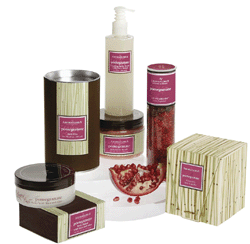 Even as the debate around the health benefits of aromatherapy rages on, for some, the practice’s embrace of all things natural is reason enough to adopt it wholeheartedly. Simply put, aromatherapy implies going back to nature and that makes people feel good. “Natural products have such appeal and popularity because they work and provide a gentle and aesthetic way for people to feel better,” says Bennis, of Essence of Vali.
Even as the debate around the health benefits of aromatherapy rages on, for some, the practice’s embrace of all things natural is reason enough to adopt it wholeheartedly. Simply put, aromatherapy implies going back to nature and that makes people feel good. “Natural products have such appeal and popularity because they work and provide a gentle and aesthetic way for people to feel better,” says Bennis, of Essence of Vali.
Knudsen of Ogallala Body agrees. “There is something intrinsically appealing about products that are derived from plants and natural substances,” she says. To Michele Mangiacotti, founder of Mangiacotti Florals in Attleboro, MA, which carries more than 60 products in six fragrances, these products are a way of decreasing stress. “We have so many things to answer—our BlackBerries, emails, voice mail. We’re bombarded by information and tasks we have to do,” she says.
“I thought, ‘What if we could inject aromatherapy into what we do every day?'”
Smells sensational; looks fab
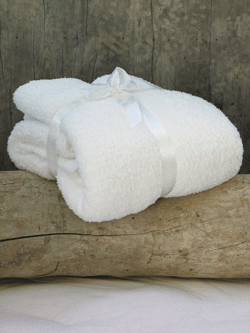 As is the case with all luxury products, the right look and feel for a bath gel or lotion will encourage customers to buy. Consider the example of Mangiacotti Florals. The Mangiacotti Florals Girl captures the whimsical essence of the company and is used on the company’s products.
As is the case with all luxury products, the right look and feel for a bath gel or lotion will encourage customers to buy. Consider the example of Mangiacotti Florals. The Mangiacotti Florals Girl captures the whimsical essence of the company and is used on the company’s products.
So important was packaging to Mangiacotti that her company spent $15,000 on a custom mold of a bottle. “We try to always bring something to the market that is fresh and unexpected and different. That’s what will always be on trend,” she says.
Ogallala Body’s products come in “simple but elegant packaging,” Knudsen says. “We serve high-end bed and bath boutiques, and packaging is the number one thing for them,” she says. “It’s about how it looks, so we made that one of our priorities.”
Affordable alternatives to aromatherapy
Jennifer Kirkwood understands well the demand for quality products that won’t break the bank. To keep costs down for herself and for retailers, the owner and founder of Marietta, GA-based La Dolce Diva offers man-made fragrance oils. “My product is not essential oils. They’re manufactured scents,” says Kirkwood, whose nearly two-year-old company manufactures two lines of personal care products.
“It makes it much less expensive.”
What exactly is the price difference between manufactured scents and essential oils? “A true lavender fragrance, you’ll probably pay about $5 to $7 more per bottle for a bath gel or lotion, because lavender is the most popular one out there; people love the smell,” Kirkwood says.
What the future holds
 The market for products in luxury categories such as spa and aromatherapy is expected to stay up. “It’s been fueled by the customer’s need to relax, unwind and spend quality time alone,” says Irvine, of Esscentual Brands. “It allows them to feel good, elevate their mood and provides an escape from the daily grind.”
The market for products in luxury categories such as spa and aromatherapy is expected to stay up. “It’s been fueled by the customer’s need to relax, unwind and spend quality time alone,” says Irvine, of Esscentual Brands. “It allows them to feel good, elevate their mood and provides an escape from the daily grind.”
“I just think it’s a whole movement,” says Knudsen, of Ogallala Body. “I don’t know if it’s a generational thing. You see more awareness of taking care of the earth and our health, and it translates over to what people are purchasing. They’re getting more picky about what they put on themselves.”
“Years ago, when I announced at a party that I was an aromatherapist, I got the same snickers that I would have gotten if I had said I was a UFO spotter,” says Jane Diokas, an organic gardener who, along with her daughter Brooke, has operated the personal-care product company Jane Inc. in Richmond, CA, since 1994. “But in the last 10 years all that has changed.”























